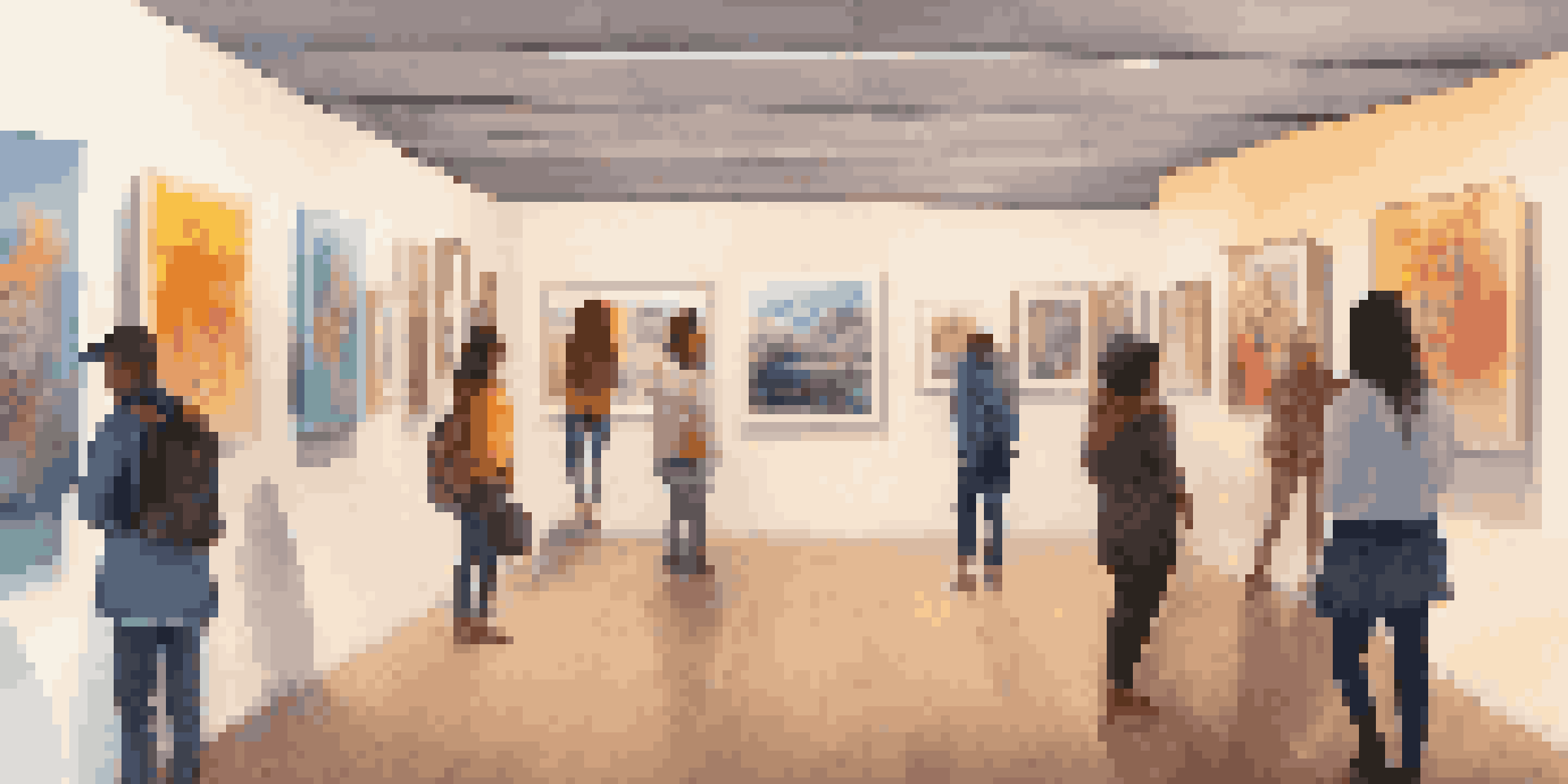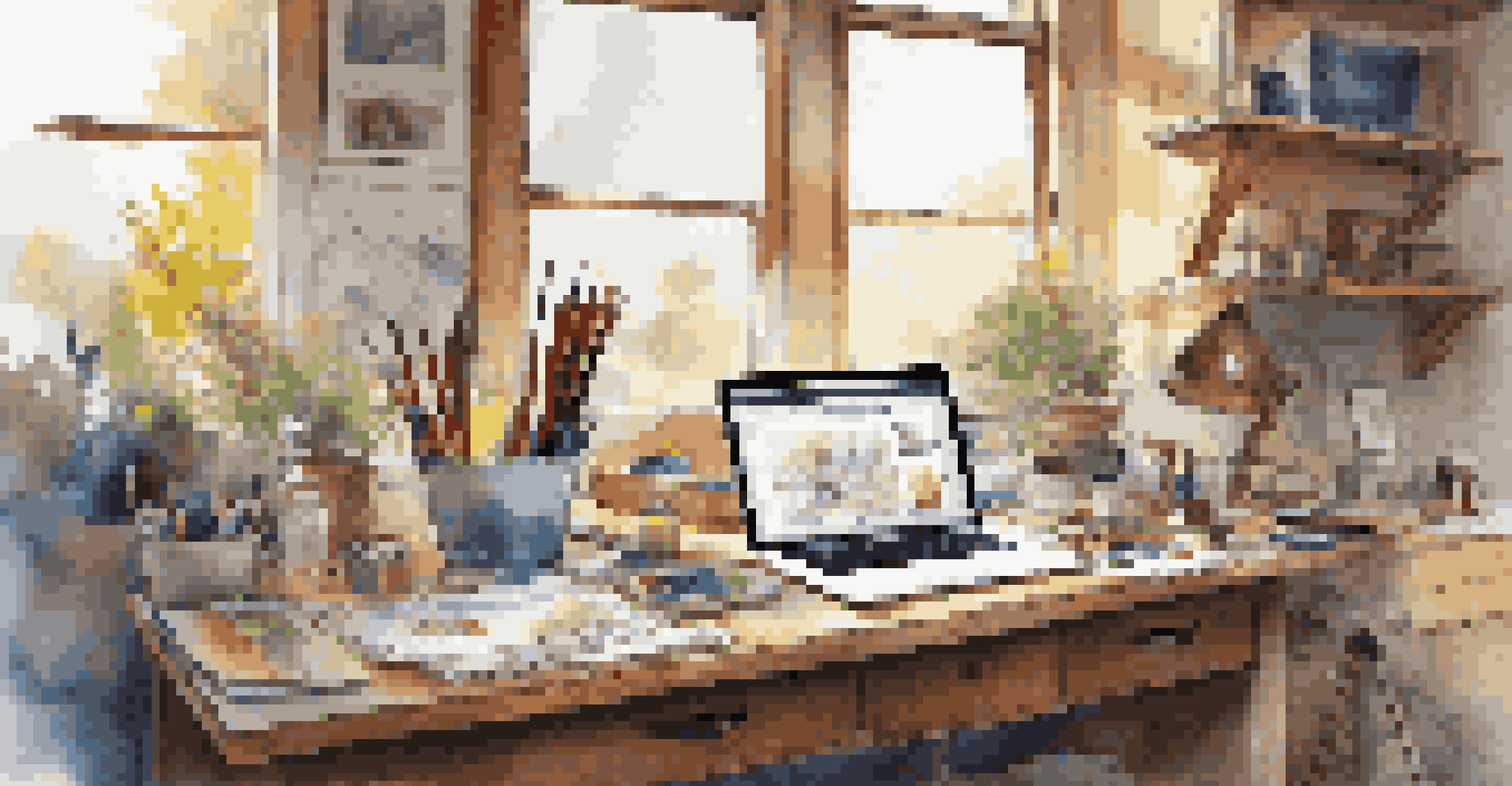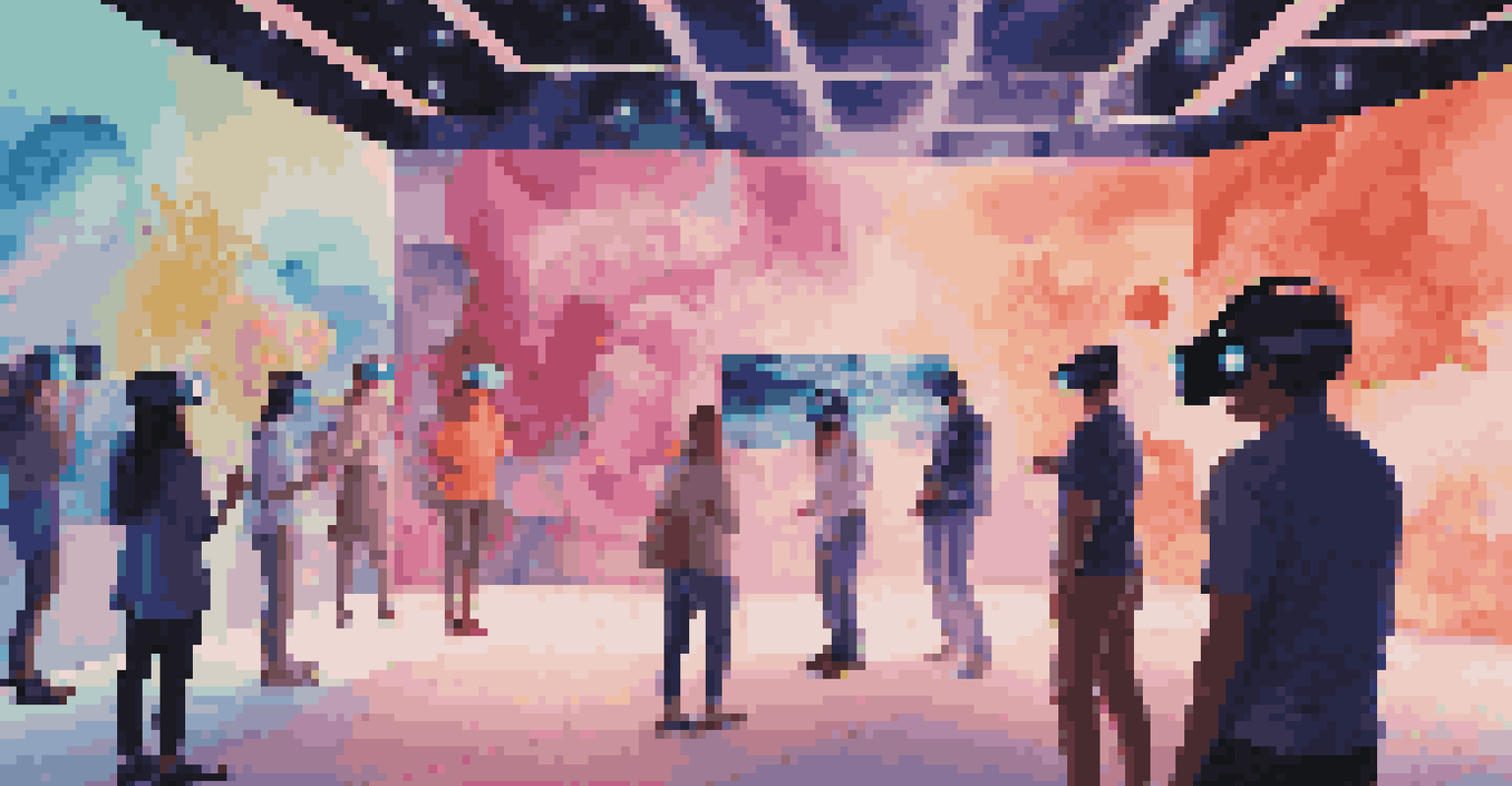Art and Identity: How the Internet Shapes Self-Expression

The Intersection of Art and Identity in the Digital Age
In a world where the internet is at our fingertips, art has become a powerful medium for self-expression. Artists are increasingly using digital platforms to showcase their work, allowing them to explore their identities in innovative ways. From social media to virtual galleries, the internet has transformed how we share and perceive art.
Art is the most beautiful of all lies; it is a reflection of our identities and experiences.
This digital landscape allows individuals from diverse backgrounds to express themselves without traditional barriers. Artists can now reach global audiences, facilitating conversations about identity that might not have been possible in a local gallery. As viewers engage with art online, they also reflect on their personal experiences and identities.
Moreover, the anonymity of the internet can empower creators to explore sensitive or controversial aspects of their identities. This freedom can lead to a rich tapestry of artistic expression, where artists feel safe to delve deep into their emotions and stories. Ultimately, the internet serves as both a canvas and a community for those seeking to share their unique perspectives.
Social Media: A Canvas for Personal Narratives
Social media platforms have revolutionized how we share our lives through art. With a simple post, artists can display their work and narrate their personal journeys, allowing followers to connect with their stories. This immediacy fosters a sense of community, where audiences can engage with the artist in real-time.

For instance, platforms like Instagram and TikTok have become vibrant spaces for artists to showcase their talents while discussing their identities. Users often share behind-the-scenes processes, providing insight into their creative journeys and the influences that shape their work. This openness invites dialogue and connection, bridging gaps between the artist and the audience.
Digital Platforms Empower Artists
The internet provides artists with unprecedented opportunities to express their identities and reach global audiences.
Additionally, social media encourages experimentation and collaboration, as artists can easily connect with others who share similar experiences. This collaborative spirit not only enriches individual artistic practices but also creates a collective narrative that highlights diverse identities. As a result, art becomes a shared experience that resonates deeply with varied audiences.
The Role of Digital Art in Identity Formation
Digital art has emerged as a vital tool for self-exploration and identity formation. By leveraging technology, artists can manipulate images and create virtual worlds that reflect their inner selves. This medium allows for limitless creativity, where anything is possible, breaking free from the constraints of traditional art forms.
The role of the artist is to ask questions, not answer them.
For many, digital art serves as a safe space to explore and express aspects of their identity that may be difficult to convey otherwise. For example, LGBTQ+ artists often use digital platforms to address themes of gender and sexuality, creating works that resonate with their experiences. Through this art, they can connect with others who may share similar struggles or triumphs.
Moreover, the accessibility of digital art means that anyone with a smartphone or computer can participate in this dialogue. This democratization of art fosters a sense of belonging and validation, as individuals can express their identities and be seen in a vast sea of creativity. In this way, digital art becomes a powerful vehicle for self-affirmation.
Online Communities: Fostering Artistic Identity
Online communities play a pivotal role in shaping artistic identities. Platforms like DeviantArt and Behance allow artists to share their work and receive feedback from peers, creating an environment that nurtures growth and exploration. These communities often become safe havens for individuals to express themselves without fear of judgment.
Within these spaces, artists can find mentors and collaborators, enriching their creative journeys. By engaging with others who share similar interests and backgrounds, they can explore new styles, techniques, and ideas that influence their work. This collaborative spirit fosters artistic development and encourages individuals to embrace their unique identities.
Social Media Fosters Community
Social media allows artists to share their personal narratives and connect with audiences in real-time, creating a sense of belonging.
Moreover, these online communities often celebrate diversity, showcasing art from various cultures and backgrounds. This representation can inspire artists to explore their roots and express their identities in ways they may not have considered before. Ultimately, these connections can be transformative, shaping how artists see themselves and their work.
The Impact of Globalization on Artistic Identity
Globalization has significantly influenced how artists perceive their identities and express themselves. The internet has created a global marketplace for art, allowing artists to draw inspiration from diverse cultures and traditions. This blending of influences can lead to unique artistic expressions that reflect a multifaceted identity.
For example, an artist from one country may incorporate elements from another culture into their work, creating a dialogue that transcends geographical boundaries. This cross-pollination of ideas can enrich the artistic landscape, fostering a deeper understanding of different identities. However, it also raises questions about appropriation and ownership in art.
Navigating these complexities requires artists to be mindful of their influences, ensuring that they honor the cultures they draw from. By engaging in respectful dialogue and collaboration, artists can create work that celebrates diversity while remaining authentic to their own identities. In this way, globalization can serve as a catalyst for artistic innovation and self-discovery.
Art as a Reflection of Societal Changes
Art has always mirrored societal changes, and the internet allows for a quicker response to current events. Artists can address pressing issues such as climate change, social justice, and identity politics through their work, engaging audiences in meaningful conversations. This responsiveness is crucial in a world that is constantly evolving.
For instance, during times of social upheaval, artists have turned to digital platforms to share their perspectives and experiences. This immediacy enables them to capture the essence of a moment and express their identities in relation to societal events. In doing so, art becomes a powerful tool for advocacy and reflection.
Globalization Shapes Artistic Identity
Global influences inspire artists to blend diverse cultural elements in their work, enriching their artistic expression and identity.
Moreover, this dynamic relationship between art and society encourages viewers to examine their own identities in light of contemporary issues. As audiences engage with art that addresses these themes, they may find new ways to relate to their experiences and understand their place in the world. Ultimately, art acts as a bridge between individual identities and collective societal narratives.
The Future of Art and Identity in a Digital World
As technology continues to advance, the relationship between art and identity will undoubtedly evolve. Emerging trends such as virtual reality and artificial intelligence are already beginning to reshape how artists create and share their work. This evolution presents exciting opportunities for self-expression and identity exploration.
Artists can leverage these technologies to create immersive experiences that invite audiences to engage with their identities on a deeper level. Imagine stepping into a virtual gallery that reflects the artist's journey, where viewers can interact with the artwork and gain insight into the creator's experiences. This level of engagement can foster empathy and understanding between artists and audiences.

However, with these advancements also come challenges, such as issues of accessibility and representation. It's essential for artists and platforms to ensure that everyone has the opportunity to access and engage with this new wave of artistic expression. As we move forward, the dialogue surrounding art and identity will continue to be vital, shaping how we understand ourselves and each other in an increasingly digital world.